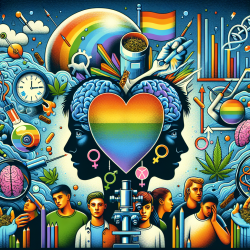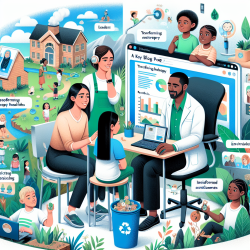Understanding Substance Use in LGBTQ Youth: Insights from Recent Research
Recent findings from the National Youth Tobacco Survey (NYTS) provide critical insights into the substance use patterns among middle and high school students identifying as bisexual, gay, or lesbian. This analysis, conducted from 2020 to 2022, highlights significant disparities in the use of cigarettes, e-cigarettes, and marijuana when compared to their heterosexual peers.
Key Findings
The study analyzed data from 37,541 students, revealing that bisexual and gay/lesbian students reported higher rates of ever using cigarettes, e-cigarettes, and marijuana compared to heterosexual students. Specifically, bisexual students showed a 1.6-fold increase in e-cigarette use, a 2.1-fold increase in cigarette use, and a 1.9-fold increase in marijuana use. Similarly, gay or lesbian students reported a 1.5-fold increase in e-cigarette use, a 1.9-fold increase in cigarette use, and a 1.7-fold increase in marijuana use.
Socioeconomic and Mental Health Factors
The research also identified socioeconomic disparities, such as lower family vehicle ownership and reduced vacation opportunities among bisexual and gay/lesbian students. These factors could contribute to the broader systemic issues affecting LGBTQ youth.
Mental health indicators showed that bisexual and gay/lesbian students reported higher rates of difficulty concentrating, feeling down, and experiencing anxiety compared to their heterosexual counterparts. These findings align with the Minority Stress Theory, which suggests that chronic stressors related to sexual orientation may lead to increased substance use and mental health challenges.
Implications for Practitioners
For practitioners working with LGBTQ youth, these findings underscore the importance of developing targeted interventions and support systems that address the unique needs of this population. Consider the following strategies:
- Implement educational initiatives focused on substance abuse prevention tailored to LGBTQ youth.
- Foster inclusive environments that support the mental health and well-being of LGBTQ adolescents.
- Address socioeconomic disparities by advocating for policies that promote equitable access to resources.
By understanding the specific challenges faced by LGBTQ youth, practitioners can better support their clients and contribute to reducing health disparities in this population.
Encouraging Further Research
While this study provides valuable insights, it also highlights the need for continued research to fully understand the factors influencing substance use among LGBTQ youth. Future studies should explore the specific stressors experienced by these adolescents and their cumulative effects on health outcomes.
To read the original research paper, please follow this link: An Analysis of Tobacco and Marijuana Use by Middle School and High School Bisexual and Homosexual Students Surveyed by the National Youth Tobacco Survey From 2020 to 2022.










